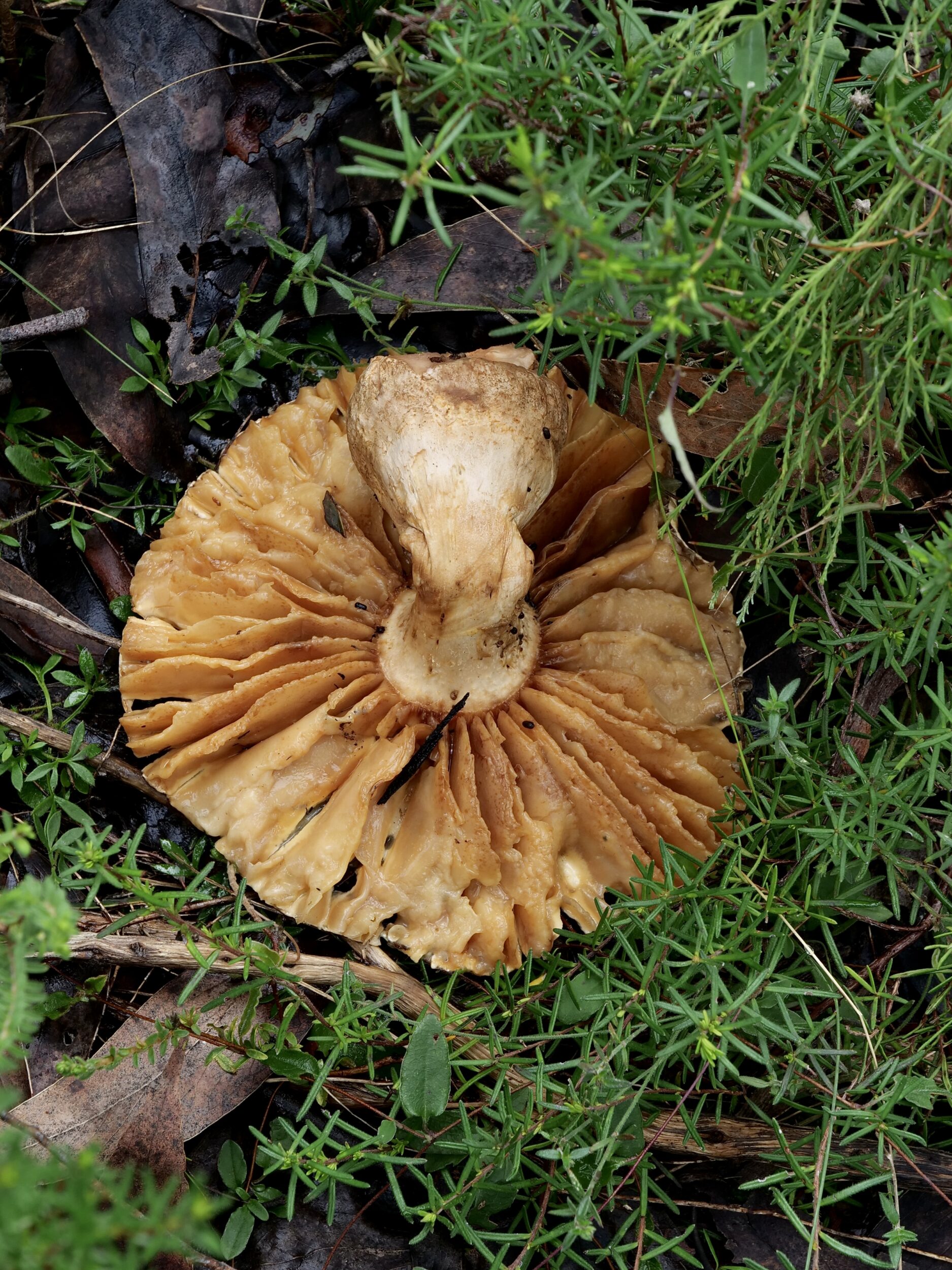The pictured mushroom/toadstool/ fungal fruiting body was very big, very wet.
Unable to support its own weight, it had collapsed.
In terms of its species’ viability, the “collapse” was probably of no consequence whatsoever.
I think it would be analogous to an exhausted salmon, dying after it had made the epic journey upstream and successfully laid eggs or fertilised them: job done.
Fungi are neither flora nor fauna.
Arguably – given their inability to photosynthesise and their need to consume/“eat” food – fungi are “closer” to animals than to plants.
The smallest fungi are tiny, single-celled organisms – yeasts, for example.
Each unicellular individual is much smaller than a pinhead.
However, the largest individual fungi make blue whales look like plankton-petite shrimp.
Possibly the largest single living terrestrial organism on “our” planet occupies circa 9.6 square kilometres of Oregon’s Malheur National Forest.
Nicknamed “the humongous fungus”, this example of Armillaria ostoyae is reckoned to be more than 8,000 years old and to have a mass of more than 30,000 tonnes!
Most of that tonnage is invisible to visiting humans; they will notice only its (occasional, edible) fruiting bodies.
Some humans love to eat what they call “honey mushrooms”.
One relevant article noted, I’ll let you take a minute to absorb the fact that pretty much every mushroom you’ve ever eaten has been fungus genitalia.
It is also worth noting that whilst all “mushrooms”/ “toadstools” and “puff balls” are fungal fruiting bodies, only a relatively small percentage of fungi species produce that kind of “genitalia”.
Fungi are “humongously” diverse in shape, colour, structure, reproductive strategies and general appearance.
Nobody knows how many species of fungi exist, but it is very safe to say that their number enormously exceeds any other named category of living beings, with the possible exception of insects and bacteria.
Click here for a succinct overview.
Photo ©️ Doug Spencer, taken at 12. 11 pm on 20 June 2023 in old-growth stringybark forest, Deep Creek Conservation Park.
